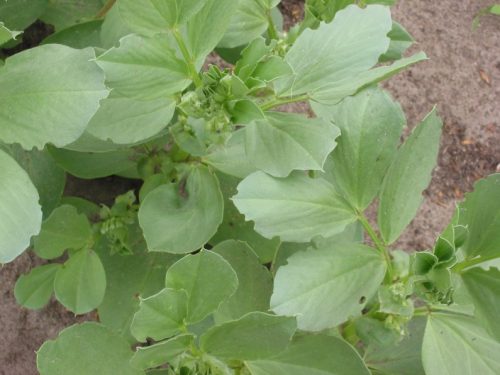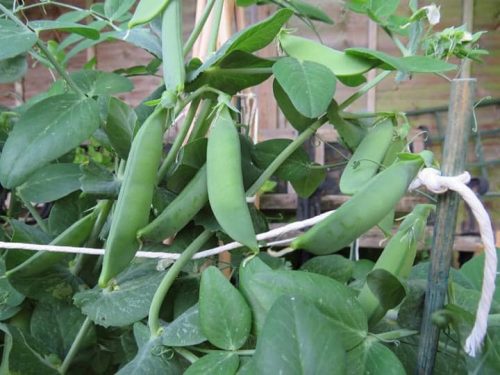Pea is an annual plant belonging to the legume family. Garden peas, Sugar peas, Snow peas and Field peas (Kapucijner pea) are all peas.
You are viewing the mobile-adapted version of the page.
The one for tablets, laptop and desktop also provides general information, such as origin and cultivation.
Pea (Pisum sativum) is an annual plant belonging to the legume family (Leguminosae).
Sow from early March in the open ground, in the final spot (harvest: June-August). There are high and low varieties; the low ones do not need support, the high ones do. This can be a scaffold of bamboo and netting, but row wood can also be used. If that is used, put it on the seedbed right at sowing time against the birds, as they like to dig out the germinating peas. Sparrows can be kept away from peas by stringing a black wire above the peas: the sparrows do not see this and are startled if they fly into it. Blackbirds don’t care about a black wire; to keep it away, only a bird netting helps.
Bugs

Feeds on roots and leaf margins (half-moons): Pea leaf weevil (Sitona lineatus).
Eaten young peas: pea moth (Laspeyresia nigricana) or pea weevil (Bruchus pisorum).
Strong (bearded) growth of lateral roots; delayed growth: beet cyst nematode (Heterodera schachtii).
Leaf is eaten by caterpillars of the cabbage moth (Mamestra brassicae).
Delayed growth, small nodules at the ends of roots: Root knot nematode (Meloidogyne fallax).
Fungi & diseases
Brown spots with gray fungus: gray mold.
Pods curl, tops turn yellow: Bean leafroll virus (BLRV).
Wet, rotten spots at the bottom of the stem: Fusarium wilt (Fusarium oxysporum).
Wet, rotten spots at the bottom of the stem: Fusarium foot rot (Fusarium solani).
Other
Seeds are dug up: birds, mice.
Harvest gets eaten away: birds.

